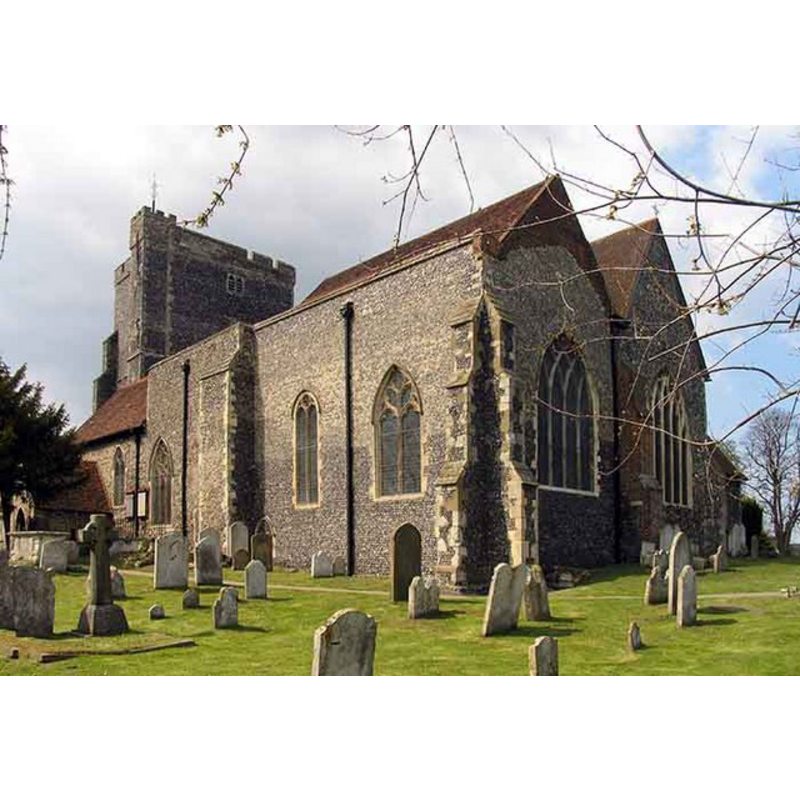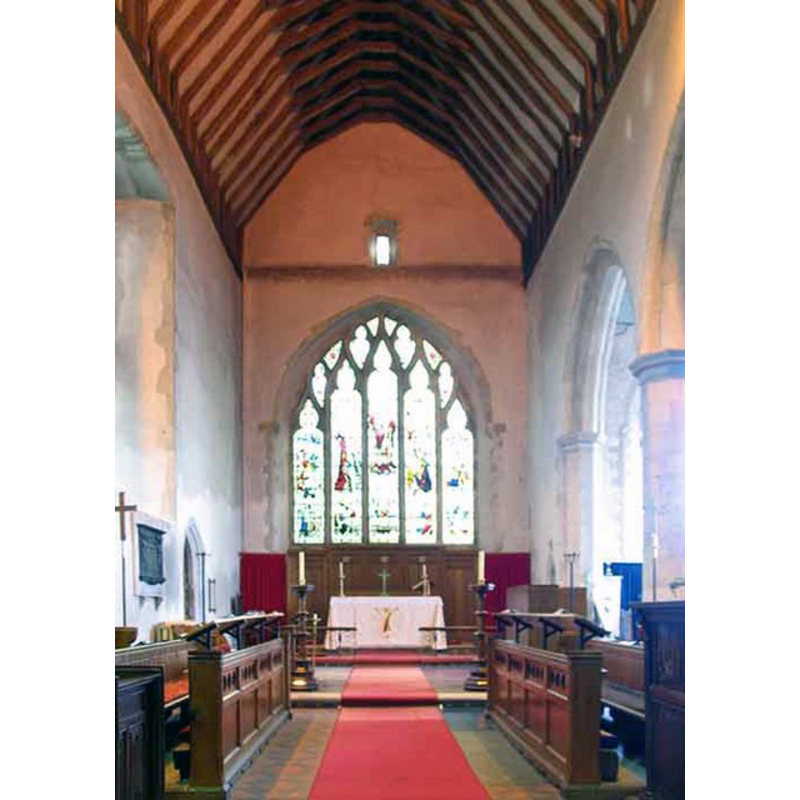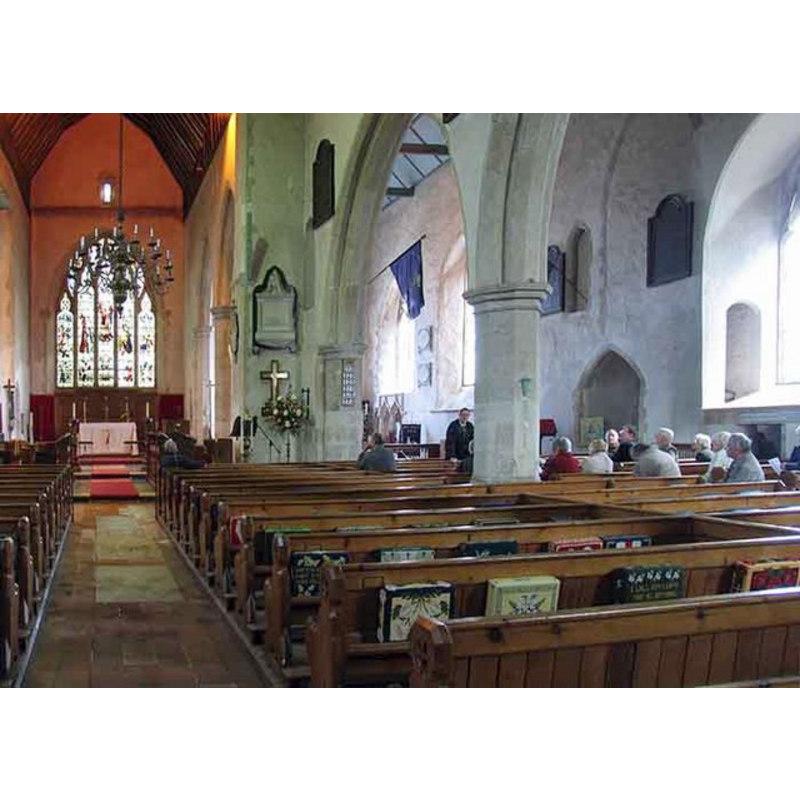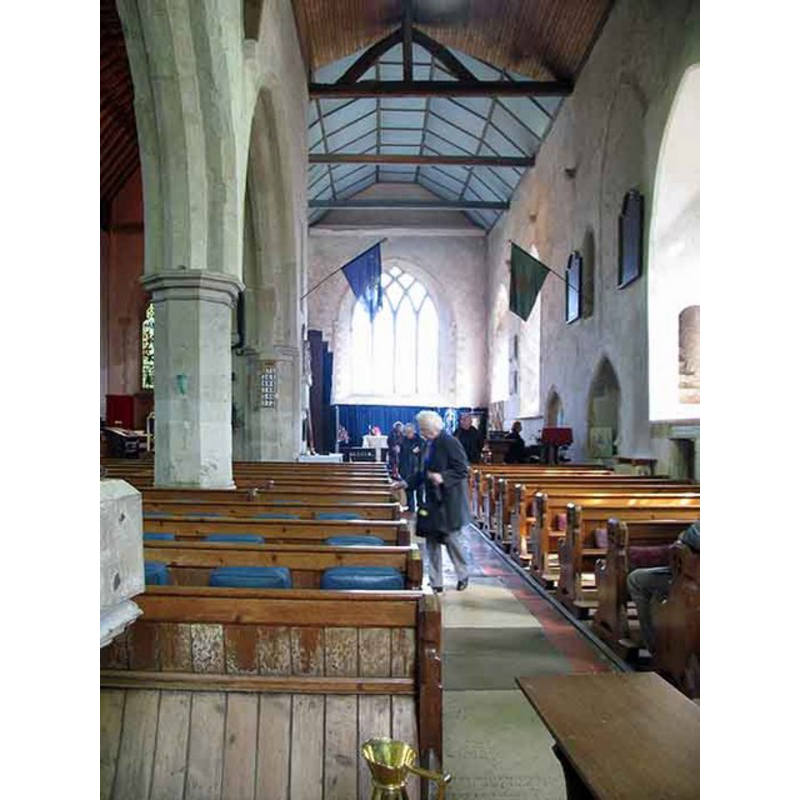Milton Regis / Middelton / Middeltune / Middleton / Middletune / Midletun / Milton-next-Sittingbourne / Milton Royal / Mylton / Villa Regia de Midleton
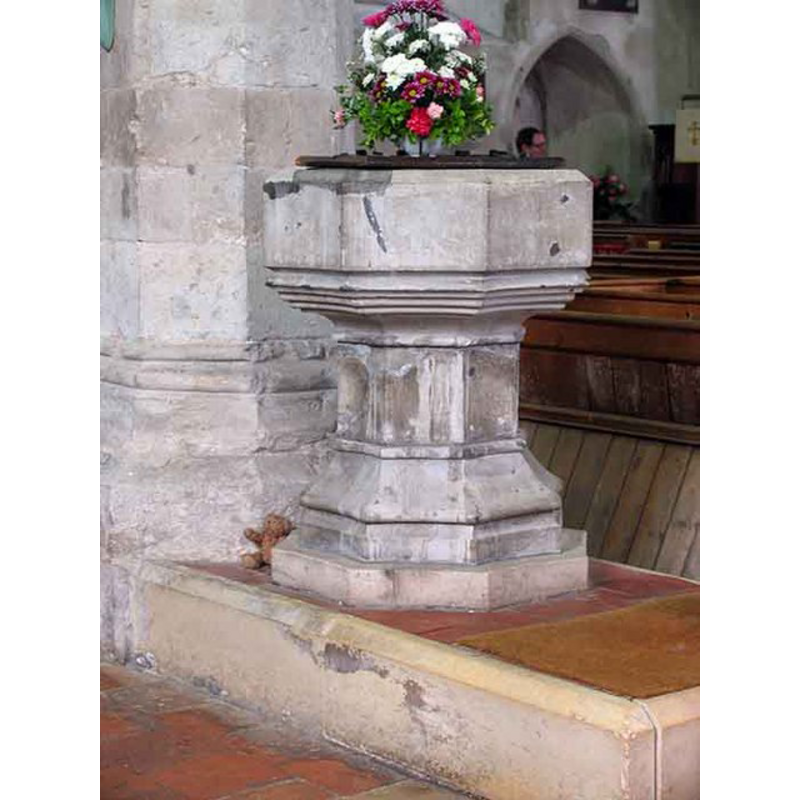
Image copyright © John Salmon, 2008
CC-BY-SA-3.0
Results: 8 records
design element - motifs - moulding
design element - motifs - moulding - 2
design element - motifs - moulding - graded
view of church exterior - southeast view
view of church interior - chancel
view of church interior - nave - looking east
Scene Description: showing both the nave (left) and the north aisle (right)
Copyright Statement: Image copyright © John Salmon, 2008
Image Source: digital photograph taken 16 April 2008 by John Salmon [www.geograph.org.uk/photo/769381] [accessed 8 September 2013]
Copyright Instructions: CC-BY-SA-3.0
view of church interior - north aisle - looking east
Scene Description: the grey shape on the left, foreground, is a corner of the font
Copyright Statement: Image copyright © John Salmon, 2008
Image Source: digital photograph taken 16 April 2008 by John Salmon [www.geograph.org.uk/photo/769398] [accessed 8 September 2013]
Copyright Instructions: CC-BY-SA-3.0
INFORMATION
FontID: 18653MIL
Object Type: Baptismal Font1
Church/Chapel: Parish Church of the Holy Trinity
Church Patron Saints: The Holy Trinity
Church Location: 15 Green Porch Close, Sittingbourne, Kent ME10 2HA
Country Name: England
Location: Kent, South East
Directions to Site: Located NW, and now a suburb of, Sittingbourne
Ecclesiastic Region: Diocese of Canterbury
Historical Region: Hundred of Milton [aka Middleton] -- Lath of Sherwinhope [aka Scray, Wiwarlet]
Font Location in Church: Inside the church, by one of the W pillars of the arcade dividing the nave from the N aisle
Century and Period: 14th - 15th century, Late Decorated? / Early Perpendicular?
Church Notes: a church here probably founded within a few years of the coming of St. Augustine in 597; Ely cathedral records attest to the existence of a church at 'Mylton' by 680 A.D.; the present church is of Augustinian foundation, with addrtions and re-building througout the Saxon, Norman periods and beyond
Font Notes:
Click to view
There is an entry for Milton [Regis] [variant spelling] in the Domesday survey [http://opendomesday.org/place/TQ9065/milton-regis/] [accessed 3 May 2015], but, despited its size, just under 400 households, i t mentions no cleric or church in it. Halsted (1798) writes: "M[ilton], or, more properly, Middleton [...] from the Saxon Midletun [...] antiently called the king's town of Milton, as being part of the antient possessions of the crown [...] In the year 1070, being the 5th year of his reign, William the Conqueror gave to the abbot and convent of St. Augustine, the church of Middelton [...] The church is dedicated to the Holy Trinity. It is a large handsome building, consisting of two isles and two chancels [...] It has a well built tower at the west end". The Parish web-site [www.holytrinitymiltonregis.com/brief-history.html] [accessed 8 September 2013] notes: "The original dedication is unknown - the name Holy Trinity could not predate the founding of Trinity Sunday by Pope Gregory IV in 828 [...] he present name of the church may well have been given at the re-dedication of the restored building, probably by Archbishop Lanfranc after the Norman Conquest. [...] The 14th century font formerly stood on a dais at the west end of the Church." The font consists of an octagonal basin with plain vertical sides, graded mouldings on the underbowl chamfer; raised on an octagonal pedestal base with thin mouldings at top and bottom, and a moulded splaying octagonal lower base. There is some damage and repairs to areas of the outer basin. The wooden cover is octagonal, flat and plain; appears modern. [NB: we have no information on the font(s) of the earlier church here].
COORDINATES
Church Latitude & Longitude Decimal: 51.356627, 0.734638
Church Latitude & Longitude DMS: 51° 21′ 23.86″ N, 0° 44′ 4.7″ E
UTM: 31U 342271 5691920
REFERENCES
Hasted, Edward, The History and topographical survey of the County of Kent [...], Canterbury: Printed for the author, by Simmons and Kirkby, 1778-
